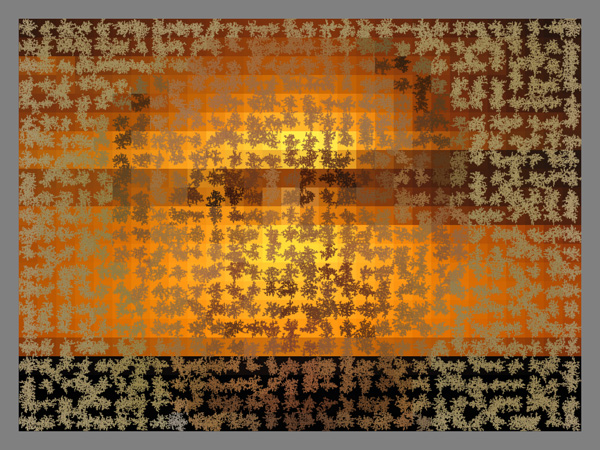Gary Greenfield |
"Duotone Composite Mosaic #7905"
Digital Print, 13" x 10" (unframed), 2009.

A duotone mosaic is one where each "tile" uses precisely two colors.
This 30 x 22
example showcases our algorithm for constructing duotone mosaics
which are composites
constructed from two identically sized thumbnail photographs. We use
diffusion limited
aggregation to composite the foreground portrait over the block
background sunset.
Note that each "tile" can be further decomposed into 41 x 41 smaller
singly colored tiles,
whence physically this piece could be realized using a sufficient
number of such smaller tiles
in a limited number of colors.
"Duotone Composite Mosaic #7310"
Digital Print, 12" x 6" (unframed), 2009.

A duotone mosaic is one where each "tile" uses precisely two colors.
This 40 x 20
example showcases our algorithm for constructing duotone mosaics
which are composites
constructed from two identically sized thumbnail photographs. We use
diffusion limited
aggregation to composite the foreground condor over the block
background mountains.
Note that each "tile" can be further decomposed into 21 x 21 smaller
singly colored tiles,
whence physically this piece could be realized using a sufficient
number of such smaller tiles
in a limited number of colors.
Gary Greenfield, Professor of Mathematics and Computer Science
Department of Mathematics and Computer Science, University of Richmond, Richmond, Virginia, USA
Many of my computer generated algorithmic art works are based on
visualizations of simulations based on mathematical models of natural
processes. Examples include cell morphogenesis, swarm behavior, and
diffusion limited aggregation. By controlling various drawing
attributes,
and freely using digital image compositing techniques, I try to
focus the
viewer's attention on the complexity underlying such processes.